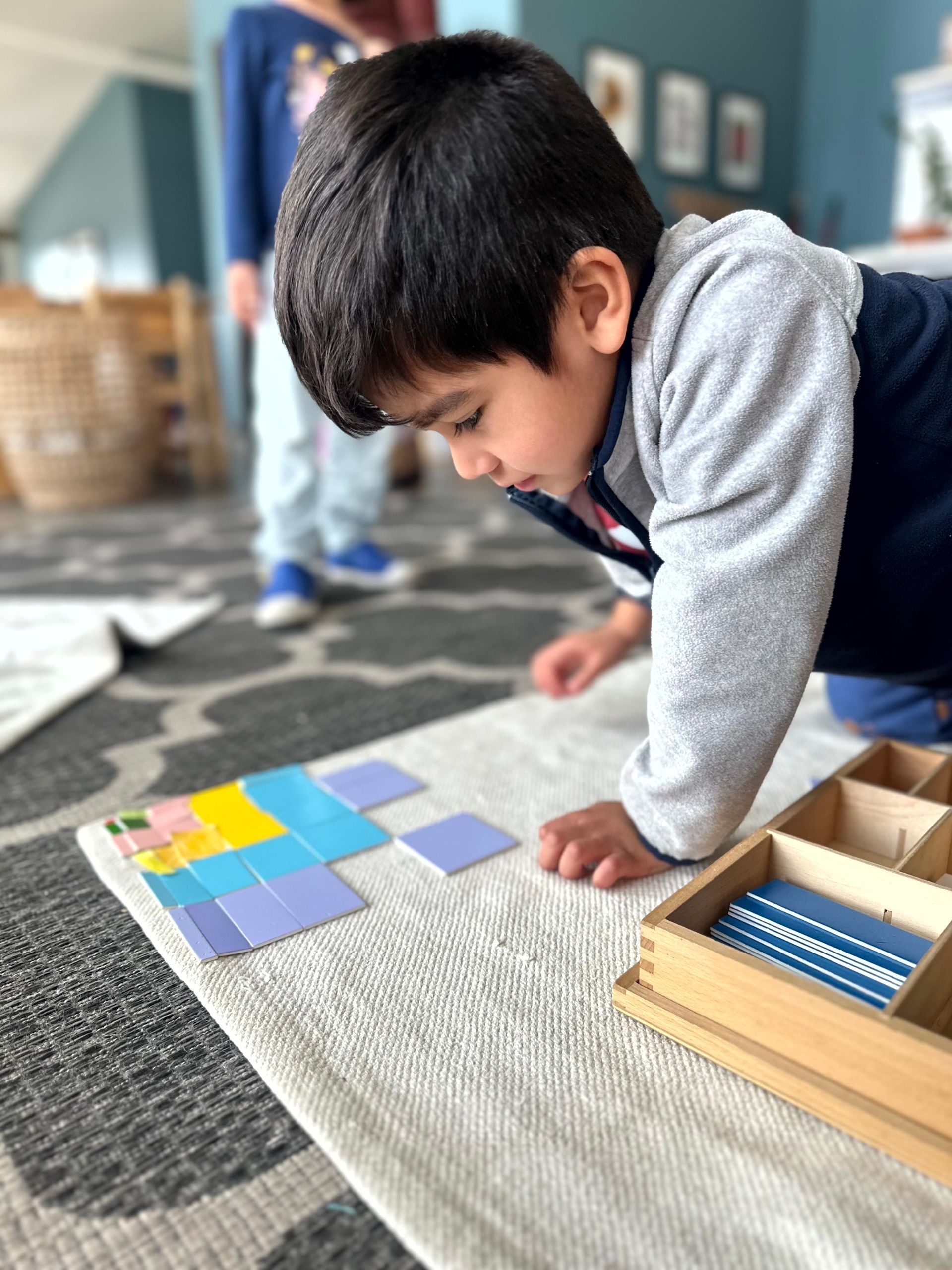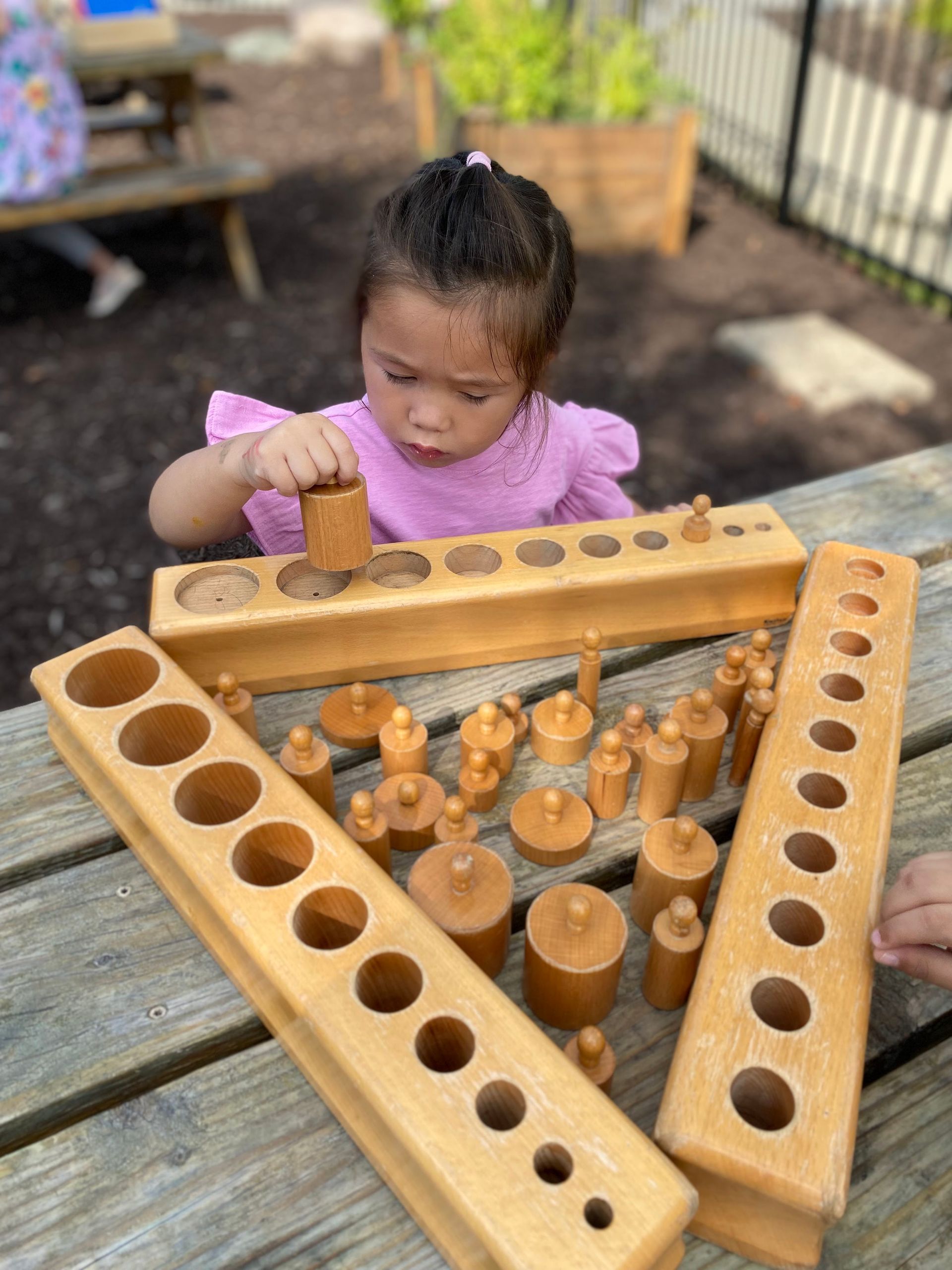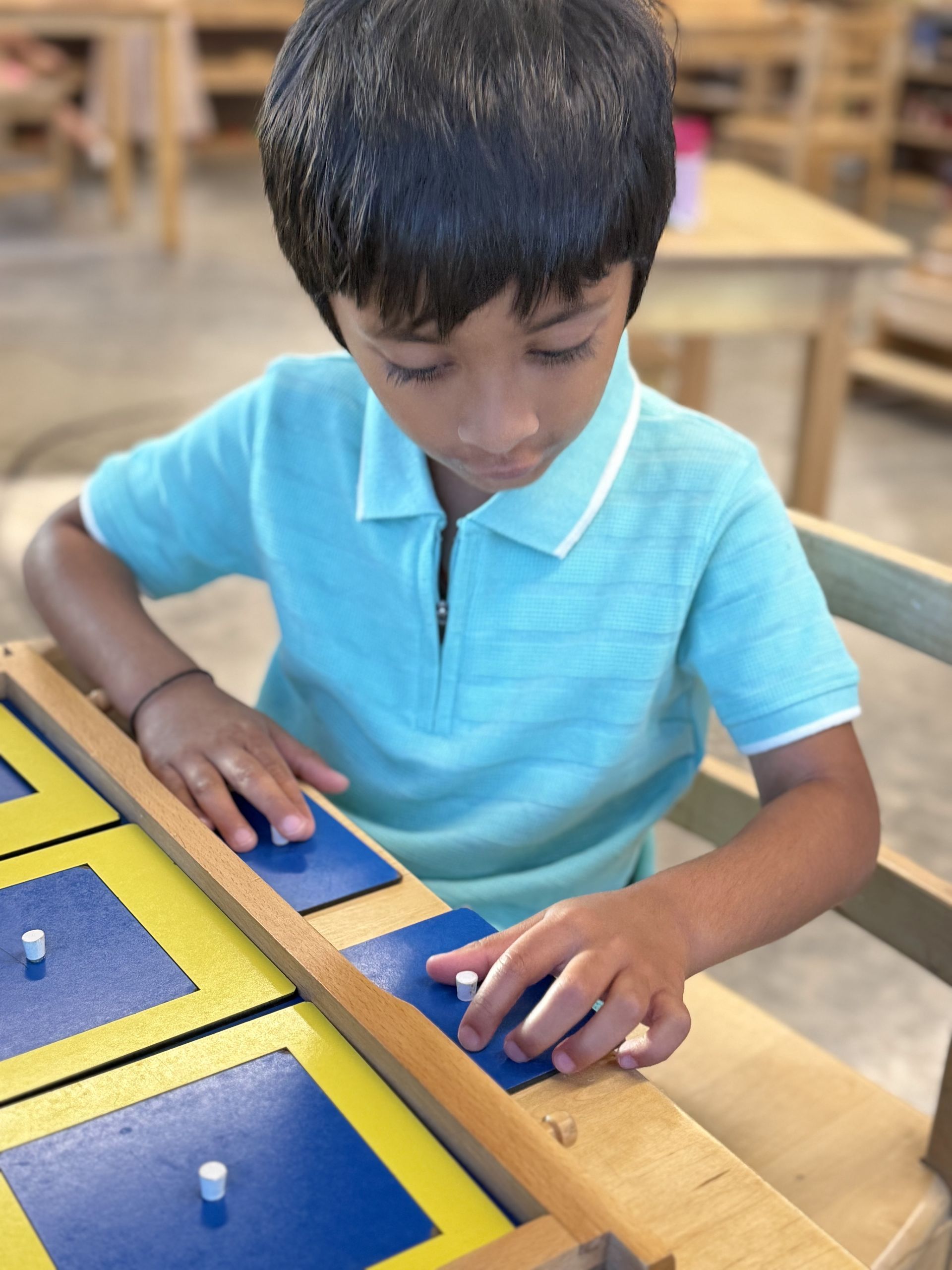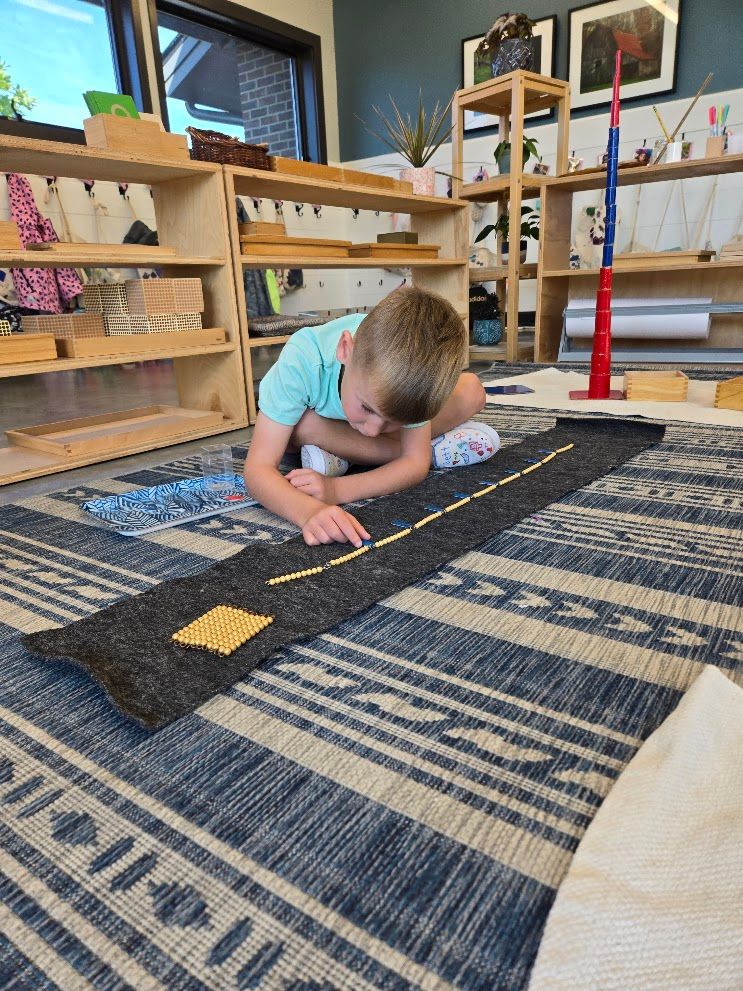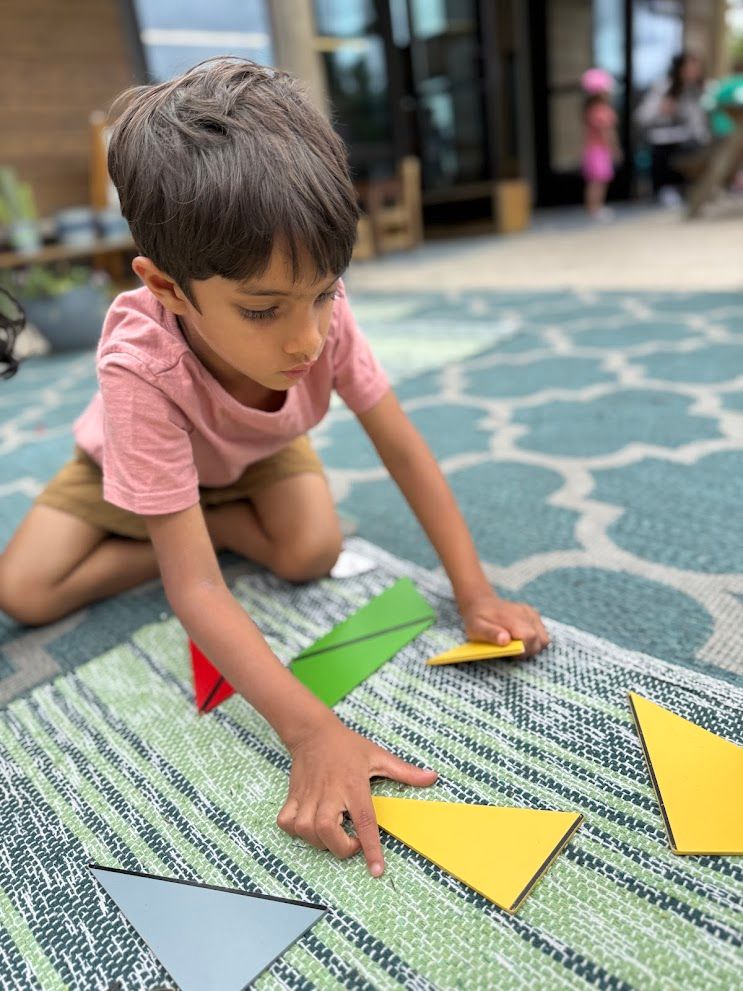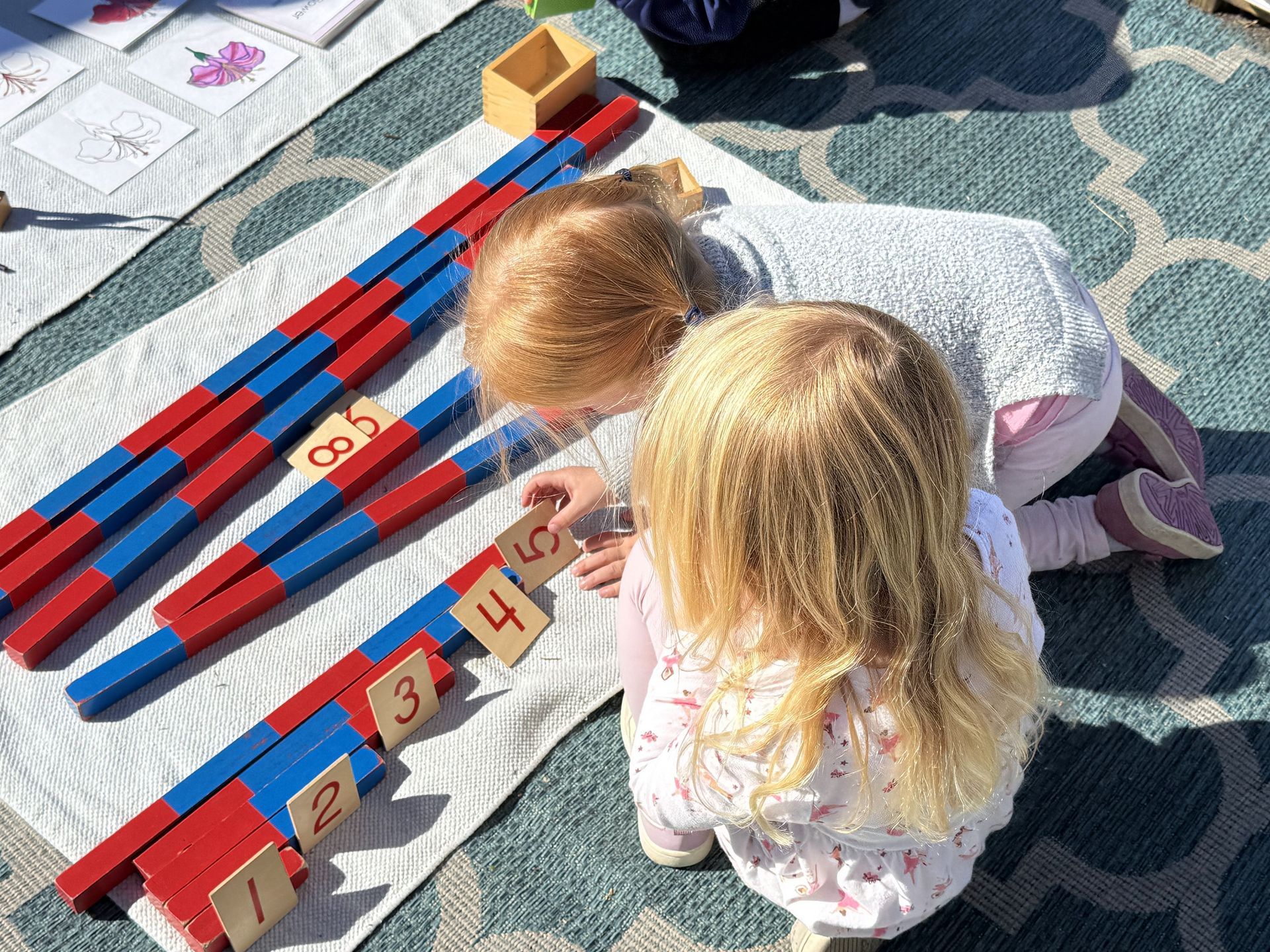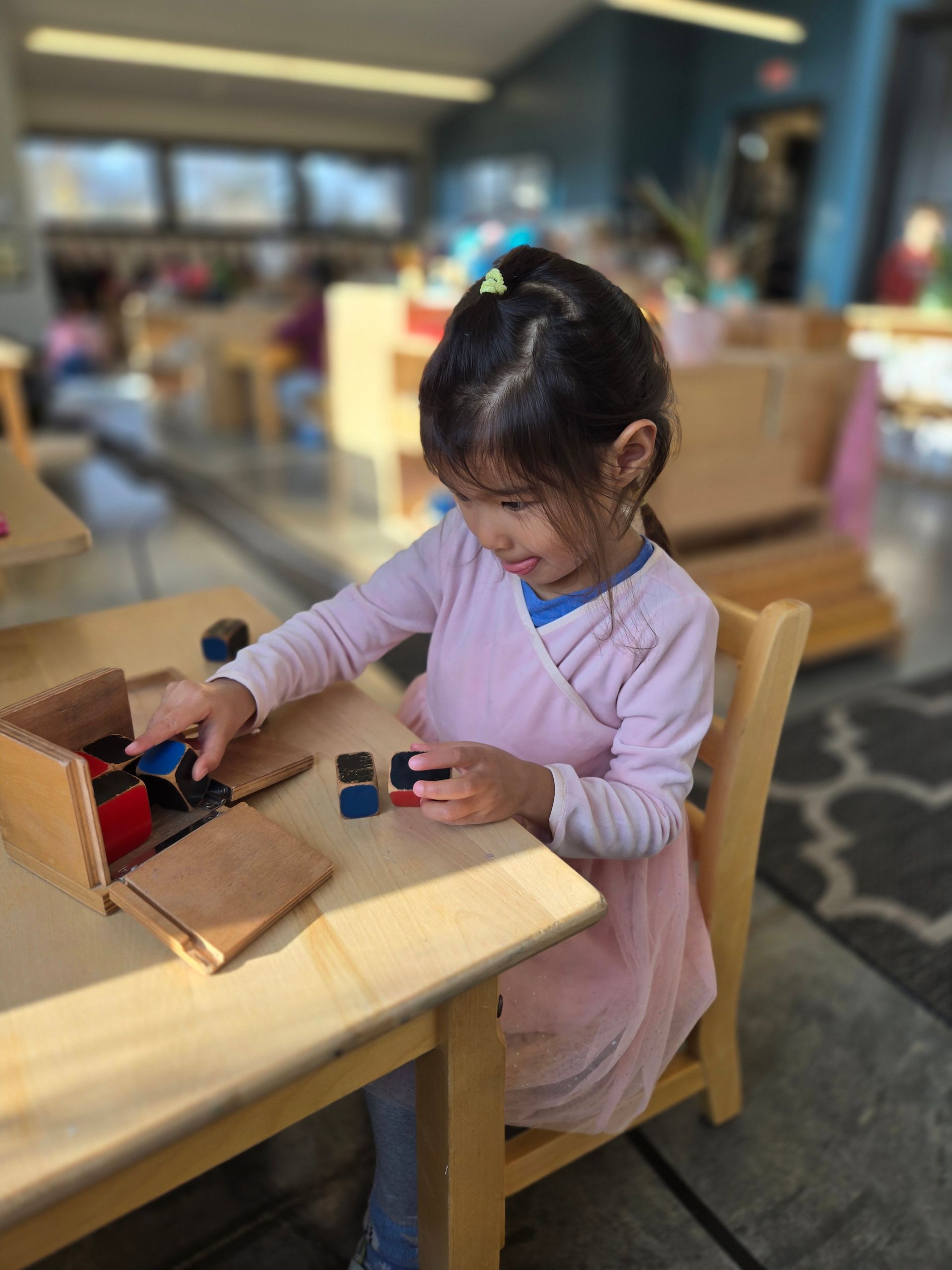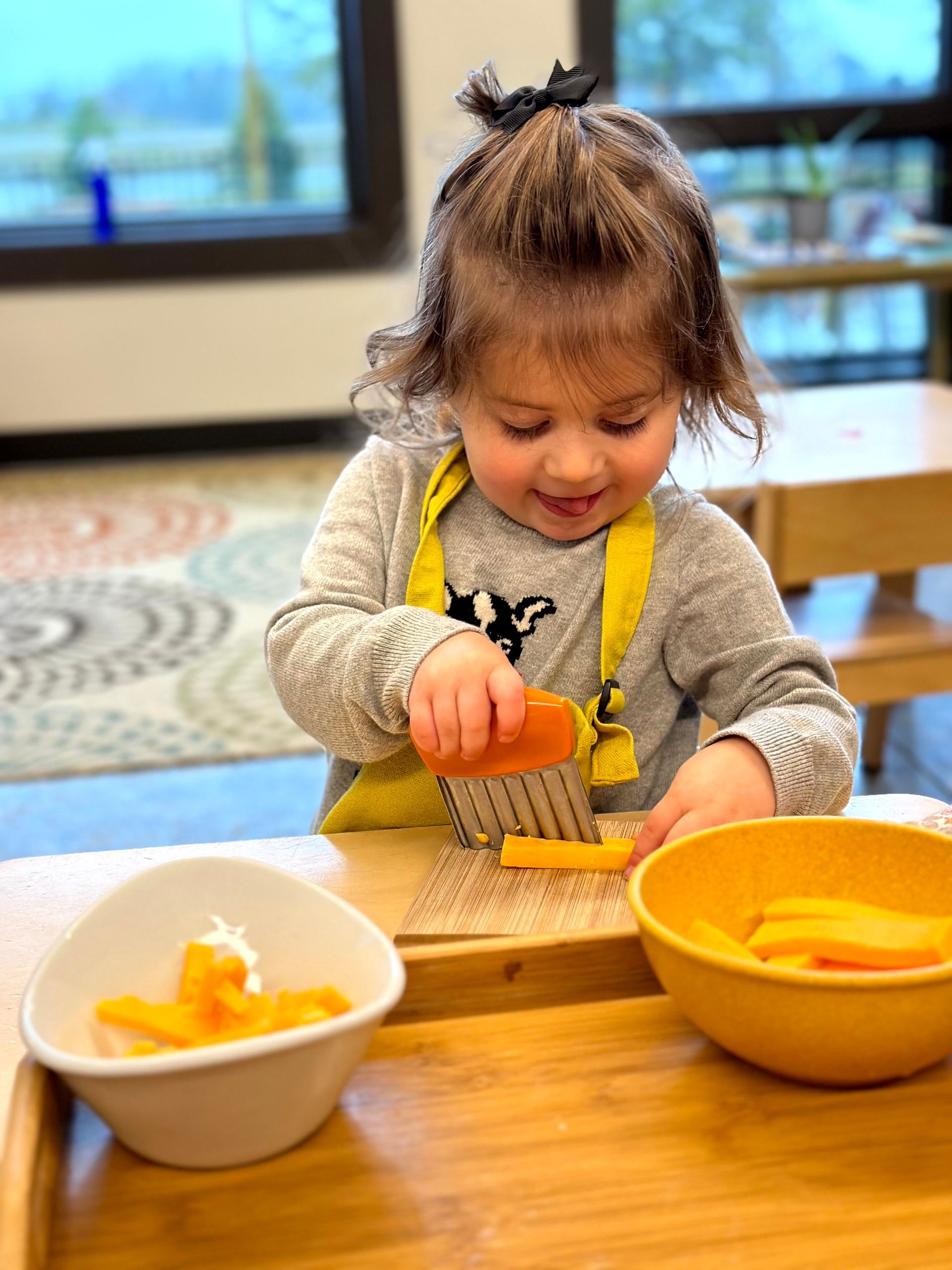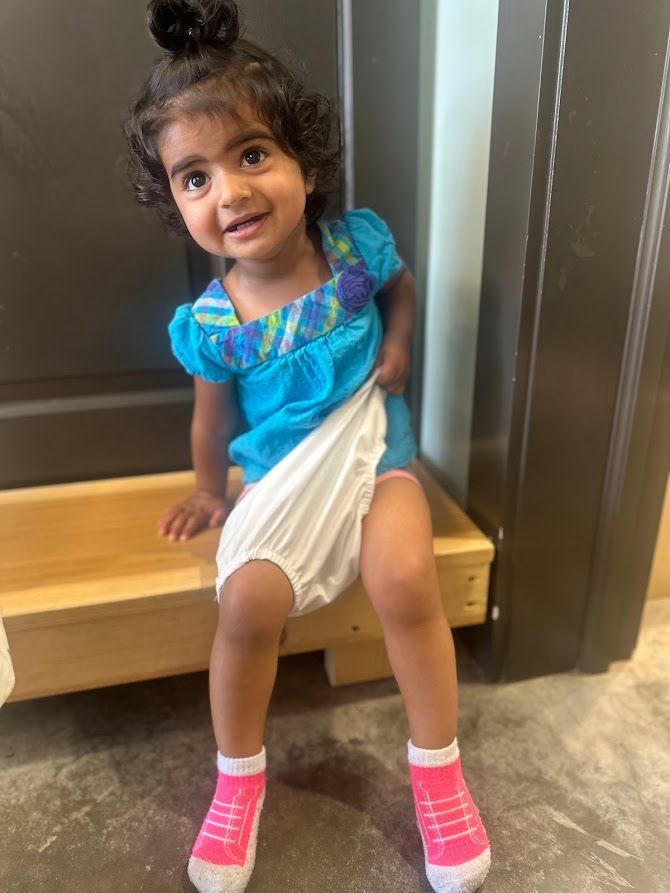"The mathematical mind is a mind which is especially interested in mathematics. Instead of finding mathematics idiotic and absurd, it finds them interesting and absorbing. It is a fact that most of the children in our Montessori Schools do achieve great enthusiasm in doing mathematics. It is the preparation of their minds which enables them to derive this pleasure."
MARIA MONTESSORI
In a Montessori Primary classroom (ages 3–6), the Sensorial and Math materials are deeply interconnected. Dr. Maria Montessori believed that children learn best through hands-on experiences, and the Sensorial materials serve as a foundation for later mathematical understanding. These materials refine the senses and prepare the child’s mind for logical thinking, classification, and problem-solving—all essential skills for mathematical learning.
Sensorial Materials: The Foundation for Mathematical Thinking
Sensorial materials are designed to help children refine their ability to perceive and categorize the world around them. Through activities that isolate specific senses—such as sight, touch, sound, and weight—children develop discrimination, order, and an awareness of patterns. These same skills are necessary for understanding mathematical concepts.
Key Sensorial materials that lay the groundwork for mathematical thinking include:
- Pink Tower – Develops size discrimination, visual-spatial awareness, and an early understanding of sequencing, which translates to concepts of measurement and scale in math. The dimensions of the Pink Tower cubes also correspond to the values of the cubes found in the Bead Chains, reinforcing the concept of cubing and powers of numbers. Additionally, the Pink Tower consists of ten cubes, mirroring the base-ten decimal system that is later explored in math.
- Brown Stair – Reinforces the concept of gradation in width, helping children grasp comparative concepts such as bigger/smaller and wider/thinner, which are later applied to measurement and geometry.
- Red Rods – Introduces length discrimination and the foundation for number sequencing and linear measurement. With ten rods, this material also subtly prepares the child for an understanding of the base-ten system.
- Cylinder Blocks and Knobless Cylinders – Encourages grading and pattern recognition, which later translate into concepts of volume, size, and logical sequencing.
- Binomial and Trinomial Cubes – While initially used as a sensorial puzzle, these materials lay the groundwork for algebraic concepts by demonstrating mathematical patterns visually and physically.
- Constructive Triangles – Introduce children to the concept that all geometric shapes can be constructed from triangles. This work is a precursor to understanding geometric principles, area, and even algebraic relationships in later years.
- Geometry Cabinet – Helps children classify shapes and recognize geometric patterns, linking directly to early geometric and algebraic thinking.
- Geometric Solids – Build upon experiences with the Pink Tower and Brown Stair, solidifying three-dimensional shape recognition and spatial awareness.
Transitioning from Sensorial to Math Materials
Once children have developed their ability to categorize, compare, and recognize patterns, they transition into more abstract mathematical concepts using the Montessori Math materials. Many of these materials mirror Sensorial materials in form and function, creating a seamless progression from concrete experiences to abstract mathematical understanding.
Numeration and Quantity
- The Number Rods resemble the Red Rods but introduce the concept of numbers and quantity.
- The Spindle Box builds on the concept of grouping and reinforces quantity recognition and counting.
- The Cards and Counters provide a visual representation of even and odd numbers, reinforcing early numeracy skills.
Decimal System and Place Value
- Many Sensorial materials, including the Pink Tower and Red Rods, are structured in tens, laying a natural foundation for the base-ten decimal system used in mathematics.
- The Golden Bead Material introduces the decimal system in a tangible way, mirroring the concept of volume from Sensorial materials like the cubes and cylinders.
- The Stamp Game and Bead Frames allow children to transition from concrete counting to abstract place value operations.
Chains and Linear Counting
- The Short and Long Bead Chains provide a hands-on way for children to explore skip counting and multiplication concepts. By counting and visually seeing the progression of numbers, children develop a deep understanding of number sequencing and multiples. These chains connect directly to early algebra by demonstrating squared and cubed numbers in a tangible form, which links back to Sensorial materials like the Pink Tower and Binomial Cube.
- The Hundred Chain and Thousand Chain allow children to experience linear counting on a grand scale, reinforcing place value, number order, and the concept of squaring and cubing numbers.
Fractions
- Fraction Circles are linked directly to early sensorial materials, such as the Constructive Triangles and Geometric Solids, as they encourage children to explore parts of a whole. The precision and pattern recognition gained through the Constructive Triangles enable children to better grasp fractions and their relationships, forming the basis for an intuitive understanding of measurement.
Elementary Geometry and Measurement Materials
As children progress to the Elementary Montessori levels (ages 6–12), the foundational work done in the Primary classroom with Sensorial materials continues to evolve with more advanced Geometry and Measurement materials.
- Geometric Solids (Primary to Elementary): In Primary, children explore the three-dimensional shapes with Geometric Solids, developing their understanding of volume and spatial awareness. In Elementary, this material is expanded upon with Geometric Solids Construction Sets, where children can manipulate the solids and explore their properties. This transition from the abstract to the more tangible forms deepens the understanding of geometry.
- Area and Perimeter Materials: In the Elementary years, children move on to measuring areas and perimeters of different geometric shapes. This work builds on the concepts introduced by the Constructive Triangles in the Primary classroom, where children can physically see how various shapes are created and measure their dimensions. These experiences prepare them for the practical application of geometry as they explore real-world measurements and properties of shapes.
By working with Sensorial materials before moving into Math materials, children develop a concrete understanding of mathematical relationships rather than relying solely on rote memorization. The transition from manipulating physical objects to abstract problem-solving is smooth because the foundational concepts are already internalized through hands-on experiences. Montessori classrooms emphasize the idea that mathematics is not just about numbers. It's about patterns, relationships, and logical thinking. Sensorial materials prepare the child’s mind for this exploration, making math a natural extension of their early experiences.
The strong connection between Sensorial and Math materials in the Montessori Primary classroom ensures that children develop a deep, intuitive understanding of mathematical concepts. By engaging their senses first, children build confidence and curiosity, making abstract math more accessible and meaningful. This thoughtful progression from concrete experiences to abstract reasoning is a hallmark of Montessori education, fostering a lifelong appreciation for mathematics.

